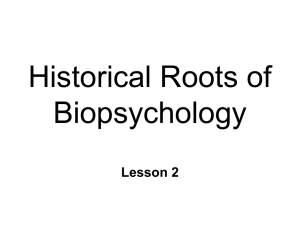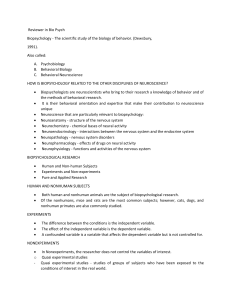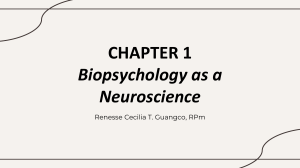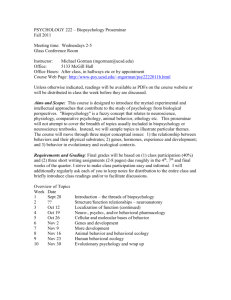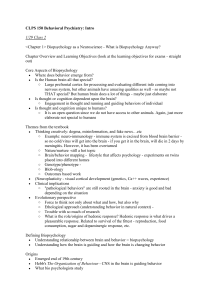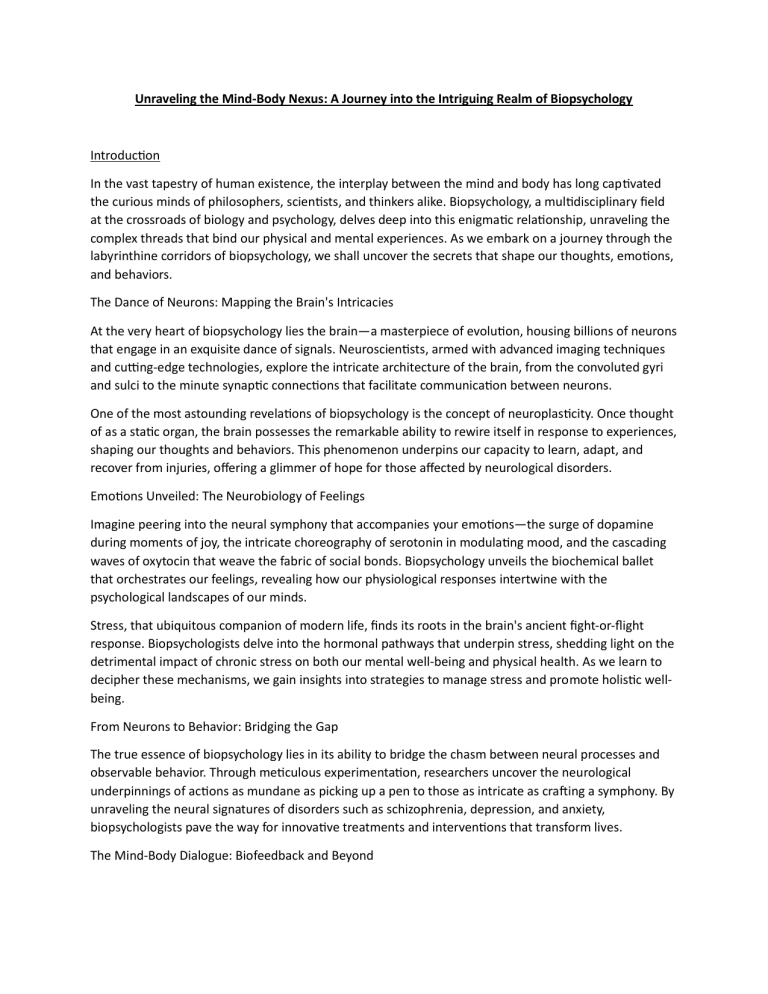
Unraveling the Mind-Body Nexus: A Journey into the Intriguing Realm of Biopsychology Introduc on In the vast tapestry of human existence, the interplay between the mind and body has long cap vated the curious minds of philosophers, scien sts, and thinkers alike. Biopsychology, a mul disciplinary field at the crossroads of biology and psychology, delves deep into this enigma c rela onship, unraveling the complex threads that bind our physical and mental experiences. As we embark on a journey through the labyrinthine corridors of biopsychology, we shall uncover the secrets that shape our thoughts, emo ons, and behaviors. The Dance of Neurons: Mapping the Brain's Intricacies At the very heart of biopsychology lies the brain—a masterpiece of evolu on, housing billions of neurons that engage in an exquisite dance of signals. Neuroscien sts, armed with advanced imaging techniques and cu ng-edge technologies, explore the intricate architecture of the brain, from the convoluted gyri and sulci to the minute synap c connec ons that facilitate communica on between neurons. One of the most astounding revela ons of biopsychology is the concept of neuroplas city. Once thought of as a sta c organ, the brain possesses the remarkable ability to rewire itself in response to experiences, shaping our thoughts and behaviors. This phenomenon underpins our capacity to learn, adapt, and recover from injuries, offering a glimmer of hope for those affected by neurological disorders. Emo ons Unveiled: The Neurobiology of Feelings Imagine peering into the neural symphony that accompanies your emo ons—the surge of dopamine during moments of joy, the intricate choreography of serotonin in modula ng mood, and the cascading waves of oxytocin that weave the fabric of social bonds. Biopsychology unveils the biochemical ballet that orchestrates our feelings, revealing how our physiological responses intertwine with the psychological landscapes of our minds. Stress, that ubiquitous companion of modern life, finds its roots in the brain's ancient fight-or-flight response. Biopsychologists delve into the hormonal pathways that underpin stress, shedding light on the detrimental impact of chronic stress on both our mental well-being and physical health. As we learn to decipher these mechanisms, we gain insights into strategies to manage stress and promote holis c wellbeing. From Neurons to Behavior: Bridging the Gap The true essence of biopsychology lies in its ability to bridge the chasm between neural processes and observable behavior. Through me culous experimenta on, researchers uncover the neurological underpinnings of ac ons as mundane as picking up a pen to those as intricate as cra ing a symphony. By unraveling the neural signatures of disorders such as schizophrenia, depression, and anxiety, biopsychologists pave the way for innova ve treatments and interven ons that transform lives. The Mind-Body Dialogue: Biofeedback and Beyond In the realm of biopsychology, the dialogue between mind and body becomes palpable through techniques like biofeedback. This innova ve approach empowers individuals to consciously influence their physiological processes—heart rate, muscle tension, and brain ac vity—by harnessing the power of their thoughts. As we harness the mind's influence over bodily func ons, a new fron er of selfregula on and healing emerges, challenging the boundaries of our understanding. Conclusion Biopsychology stands as a testament to the intricate interplay between biology and psychology, revealing a world where the physical and mental realms intertwine inextricably. With each discovery, we inch closer to unraveling the mysteries of consciousness, emo ons, and behavior. As biopsychologists con nue to peer into the depths of our neural landscapes, the boundaries of possibility expand, offering hope for a future where the mind and body harmonize in exquisite synchrony.
